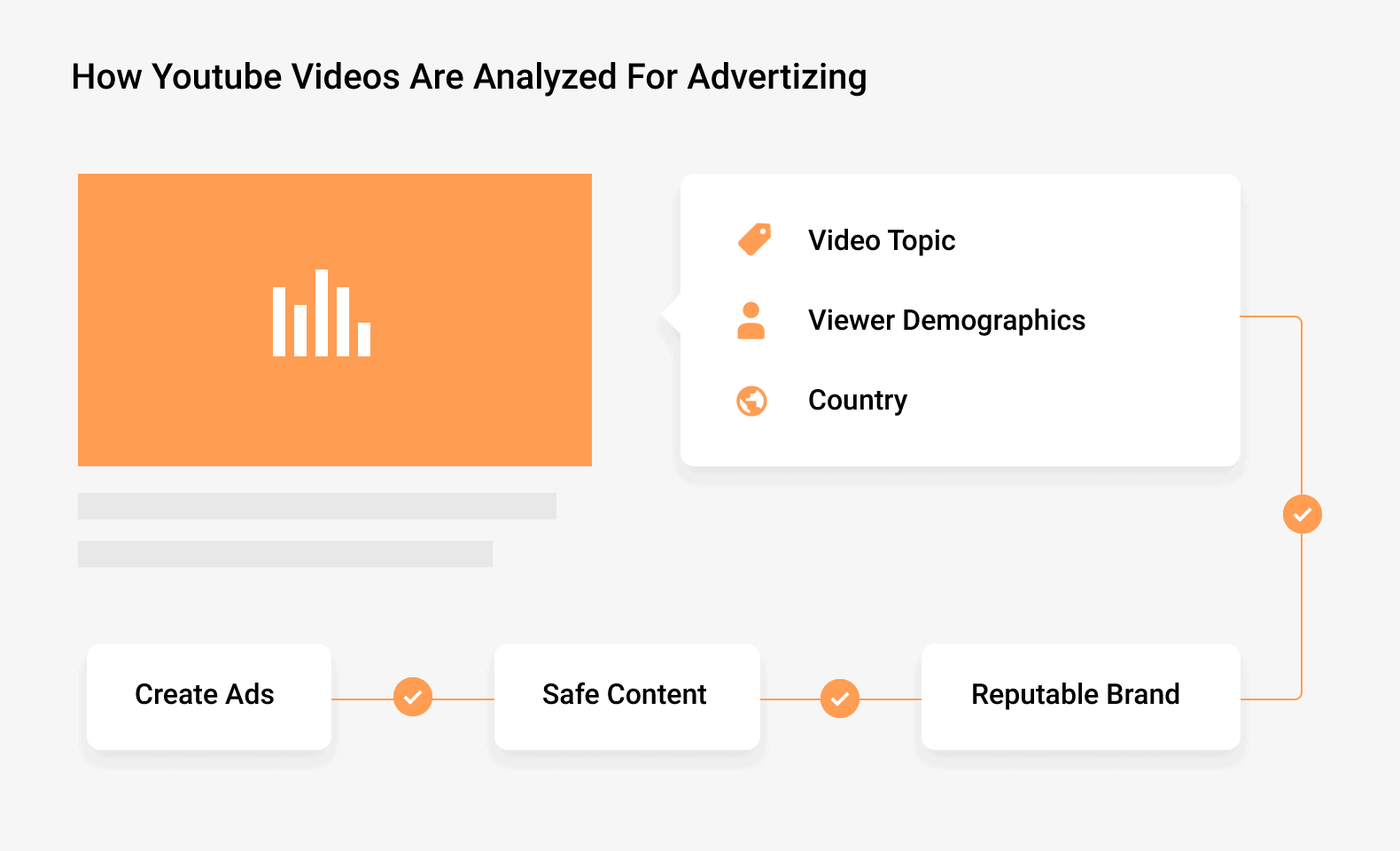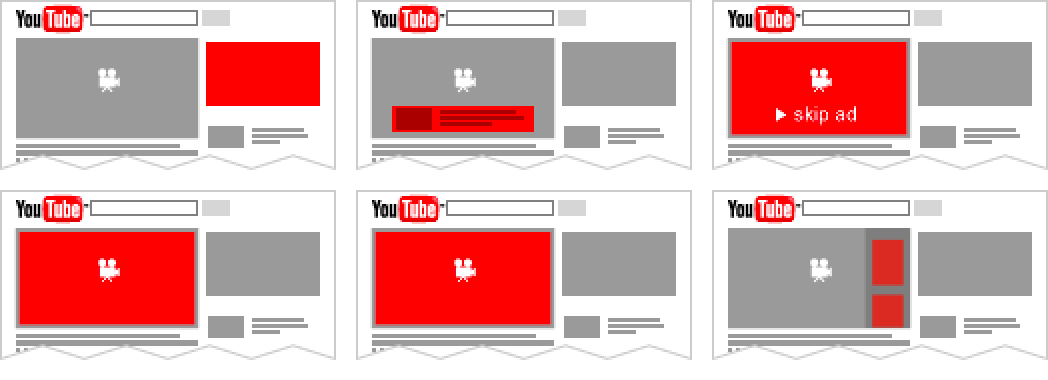Monetize With YouTube Ads
How Do YouTube Ads Work?
YouTube ads are designed to get ads in front of an advertiser’s target audience.
Advertisers determine the audience for a video based on that video’s topic, viewer demographics and country. If your video seems like a good fit for their audience, they may advertise on that video:

In addition to interest and demographic based targeting, advertisers also take into account whether or not they want to associate their brand with a particular video’s content. Content that’s violent, shocking or explicit may may not get a lot of interest from advertisers (even it’s an otherwise perfect match).
YouTube ads come in 6 primary formats, including display ads, bumpers and more.

Best Practices
Don’t Enable Ads Right Away
You may have heard that YouTube’s recently rolled out a new set of requirements (4,000 Watch Hours and 1,000 subscribers) that you need to hit before you can apply to the YouTube Partner Program.

Although many YouTubers were upset by the change, when it came down to dollars and cents, the new guidelines didn’t have much impact. In fact, YouTube reports that 99% of creators affected by the new guidelines made less than $100 per year.
In fact, this change may be a blessing in disguise.
Why? Monetizing too soon (and worrying about monetization) is a common mistake new YouTubers make.
Of course, you want to make money from your YouTube presence. But to make money from ads, your videos need to get a lot of views. And if you focus on revenue, it’s going to distract you from all the things you need to do to build a successful channel.
In fact, even if you’re at 1k subscribers and 4k Watch Hours, you may want to consider holding off on ads until you feel that you have a consistent system for creating videos that bring in views and subscribers.
Target a Specific Demographic
YouTube advertisers want to put their ads in front of a specific group of people. So the more targeted your audience is, the more people will want to advertise on your videos.
Let’s take a look at things from an advertiser’s point of view. For example, let’s say that you’re an advertiser that sells workout plans for building muscle.
And your target demographic is: “Men between the ages of 25-32 that are interested in bodybuilding”.
Which channel would you rather advertise on:
Channel A: FitnessVideo123. Creates fitness videos for men and women of all ages. Workouts include: yoga, pilates, strength training and cardio.
Channel B: GetJacked!. Creates workout videos specifically for young men that want to become bodybuilders.
Obviously, Channel B is going to appeal to advertisers more than channel A.
Now: this doesn’t mean that your channel needs to only appeal to one, tiny group. But to maximize revenue from ads, it does help to position your channel so it attracts viewers from a certain demographic.
Optimize Your Videos
In addition to demographics, advertisers use metadata to find videos that their customers watch.
So if you optimize your title, description and tags for SEO, your videos will be easier for advertisers to find (not to mention the fact that you’ll also get more views).
For example, let’s say that you’re an advertiser looking to promote your new organic coffee brand. You’d probably enter keywords like these in Google Adwords:

Your ads will run on videos that use these terms in their video metadata.
So if you run a coffee channel, you want to make sure to optimize every video using keywords that people search for on YouTube. That way, advertisers can easily find (and place ads) on your videos.
Avoid The Dreaded “Yellow Dollar Sign”
The Yellow Dollar sign is a new classification that indicates your video isn’t “suitable for all advertisers”.

This doesn’t necessarily mean that your video violates YouTube’s policies. Your videos will still appear on YouTube as normal. However, it’s unlikely that you’ll get any interest from advertisers.
Fortunately, you can reduce the risk of your video’s getting the Yellow Dollar Sign by avoiding the following:
- Shocking Content: It’s OK to have surprises in your videos. But according to YouTube, videos that primarily exist to shock people aren’t advertiser-friendly.
- Profanity: Self-explanatory. Many YouTubers now bleep out curse words.
- Misleading or Explicit Thumbnails: Advertisers don’t just look at the content of the video itself. They also take your video thumbnail into account.
- Controversial: Needless to say, most advertisers don’t want to advertise on videos that take a controversial stand on an issue.
It bears repeating: you’re free to publish videos that are shocking, contain profanity and that are controversial in nature. That said, this will probably limit (or even eliminate) advertiser interest on those videos.
Check Demographics
YouTube actually shows you your audience’s exact demographic profile (age, gender and country) in the YouTube Studio.

This data can help you understand if your videos are appealing to groups that advertisers in your niche are going to want to bid on (they can also help you if you decide to promote products on your channel).
Learn More
Ad-serving model: A lesson from YouTube’s Creator Academy on how ads work.